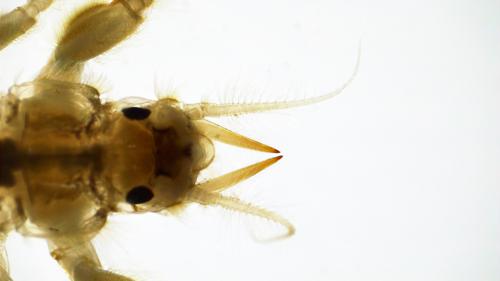| Common Name |
Common Burrower Mayfly |
| Phylum |
Arthropoda |
| Class |
Insecta |
| Order |
Ephemeroptera |
| Family |
Ephemeridae |
| Description |
10-32mm, not including antennae and tails. They have two tusks that originate on the mouthparts near the head that are visible in top view. Most of the abdomen segments have elongated feathery gills that curve over the sides of the abdomen. For more photos, refer to our online gallery: tinyurl.com/tdflujn |
| Habitat |
Lentic and lotic-depositional. Some species are usually very abundant in lakes, ponds, large rivers, and reservoirs. All species live in soft sediment but the specifics vary - some can be found only in fine particles like silt and clay while others may be found in sand and gravel. |
| Feeding Information |
Primarily collector-gathers but also collector-filterers. Some species use their gills to create a current to bring organic matter into their burrows. |
| Water Quality Tolerance |
Mostly facultative. Some are very sensitive or somewhat sensitive. Increased populations may be found in areas with moderate additions of organic matter, their primary food source. However, too much organic matter completely eliminates Ephemeridae because the decomposition creates intolerably low DO levels. |
| References |
Voshell & Wright. 2002. |




